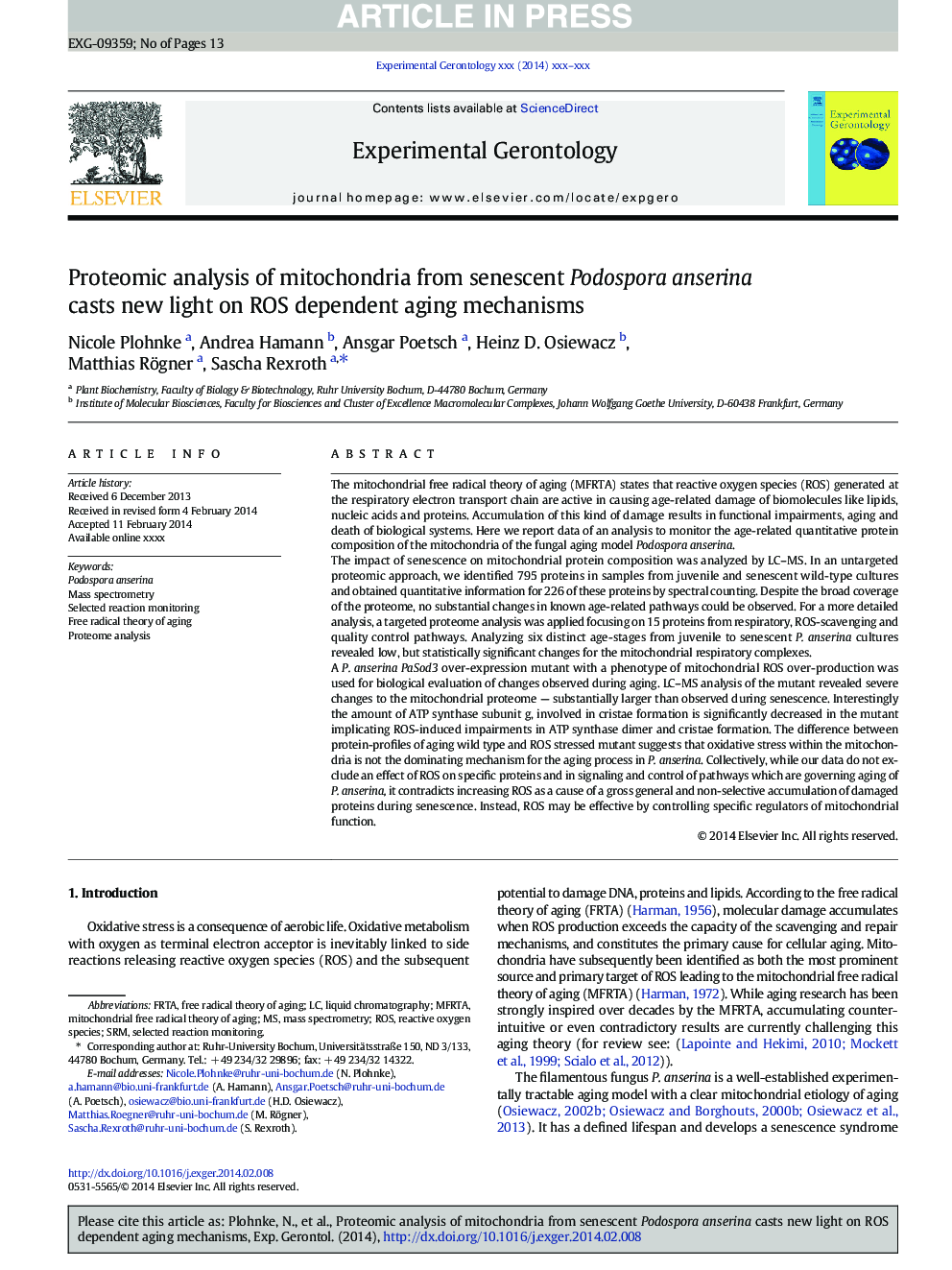| Article ID | Journal | Published Year | Pages | File Type |
|---|---|---|---|---|
| 8264222 | Experimental Gerontology | 2014 | 13 Pages |
Abstract
A P. anserina PaSod3 over-expression mutant with a phenotype of mitochondrial ROS over-production was used for biological evaluation of changes observed during aging. LC-MS analysis of the mutant revealed severe changes to the mitochondrial proteome - substantially larger than observed during senescence. Interestingly the amount of ATP synthase subunit g, involved in cristae formation is significantly decreased in the mutant implicating ROS-induced impairments in ATP synthase dimer and cristae formation. The difference between protein-profiles of aging wild type and ROS stressed mutant suggests that oxidative stress within the mitochondria is not the dominating mechanism for the aging process in P. anserina. Collectively, while our data do not exclude an effect of ROS on specific proteins and in signaling and control of pathways which are governing aging of P. anserina, it contradicts increasing ROS as a cause of a gross general and non-selective accumulation of damaged proteins during senescence. Instead, ROS may be effective by controlling specific regulators of mitochondrial function.
Keywords
Related Topics
Life Sciences
Biochemistry, Genetics and Molecular Biology
Ageing
Authors
Nicole Plohnke, Andrea Hamann, Ansgar Poetsch, Heinz D. Osiewacz, Matthias Rögner, Sascha Rexroth,
